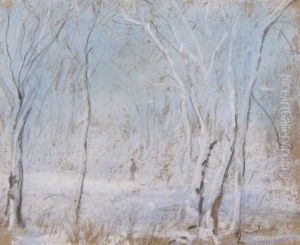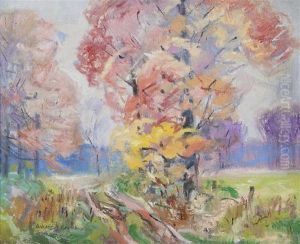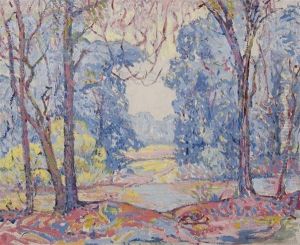Alber Krehbiel Paintings
Albert Henry Krehbiel, born on November 25, 1873, in Denmark, Iowa, was an American artist renowned for his murals and his role in the American Impressionist movement. Despite his Midwestern roots, Krehbiel's talent and ambition led him to study at the Art Institute of Chicago, where he honed his skills and later became an influential faculty member.
Krehbiel's dedication to his craft was further demonstrated when he traveled to Paris to study at the prestigious Académie Julian under Jean-Paul Laurens and Benjamin Constant. His time in Europe was marked by significant achievements, including winning the Prix De Rome, which allowed him to study at the American Academy in Rome from 1901 to 1904. This period was critical in shaping Krehbiel's artistic style, exposing him to classical art and the vibrant European art scene.
Krehbiel's work often depicted serene landscapes and was characterized by a soft, impressionistic touch, a contrast to the classical training he received in Rome. After returning to the United States, he became an influential figure in Chicago's art community, contributing to the city's cultural landscape through his teaching and his art. One of his most notable contributions was his work on the murals for the Illinois Supreme Court Building in Springfield, an achievement that showcased his mastery of large-scale compositions and his ability to blend classical techniques with a modern sensibility.
While Krehbiel's murals brought him a measure of public acclaim, his impressionist landscapes were also highly regarded by art critics and collectors. His work was exhibited in various prestigious galleries and earned him numerous awards throughout his career. Despite this success, Krehbiel remained dedicated to teaching, influencing a generation of artists at the Art Institute of Chicago.
Albert Krehbiel passed away on June 29, 1945, leaving behind a legacy of artistic excellence and a body of work that continues to be appreciated for its beauty and technical mastery. His contributions to American art and education are remembered as significant, and his paintings and murals still grace public and private collections, a testament to his enduring impact on the American art scene.


